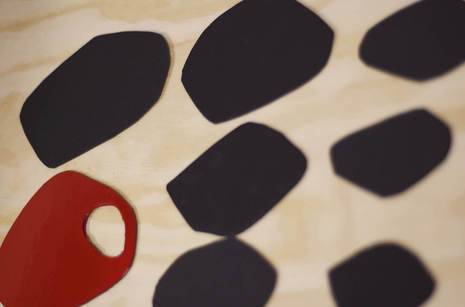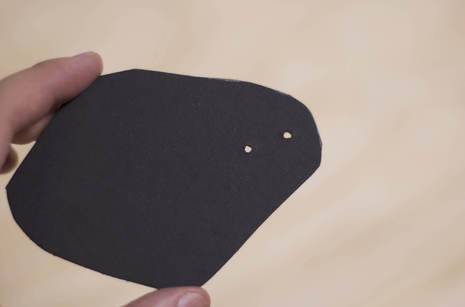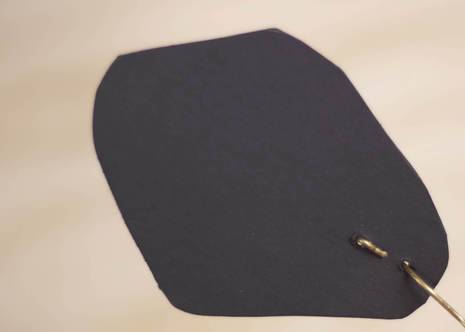Iconic mid-century designer Alexander Calder’s background in engineering and mathematics inspired him to make art that was three-dimensional and kinetic. But you don’t need a degree to make your own DIY Calder mobile! It just takes a little imagination and a lot of balance. In this project, you’ll learn how basic shapes can come together to create a spinning, swaying, stunning work of art for any room. For less than $10.00, you’ll have your own version of this sculpture, inspired by the great Alexander Calder.
DIY Calder Mobile Materials
- 20” x 32” sheet matte board
- 3-4 3?32” x 3’ brass or copper coated steel rods
- Spray paint or decorative paper and spray adhesive
Tools
- Pencil
- Scissors
- Electrical drill and 3/32” drill bit
- Needle nose pliers
- Lineman’s pliers (optional)
Note: Brass or copper-coated steel wire is available at welding supply shops or hobby stores that sell model trains and airplanes.The goal is to find something sturdy but soft enough to bend.The raw steel in the weldable section of the hardware store is too tough to manipulate by hand.When looking for supplies ask for piano wire or coat hanger wire.
Let’s make a Calder Mobile!
Step 1
Taking inspiration from Alexander Calder’s mobile and sculptural work, draw a series of organic shapes (amoebas, boomerangs, teardrops, etc.) on the matte board, with each getting a little bigger in size. Cut these out and paint them or cover with decorative paper and spray adhesive.

Step 2
Drill two 3/32” holes near the end of each shape, about 3/4” apart.

Step 3
Insert a rod into the hole nearest the edge of the smallest shape. Using the needle nose pliers, make a 90° bend about 3/4” of the way down, then make a second bend the distance between the two holes.

Step 4
Place the end of the rod through the second hole. Use either the needle nose or the lineman’s pliers to crush the end of the rod, securing it to the shape. Bend the rod back in line with the shape.

Step 5
For the first level of the mobile, both sides will have a secured edge. Cut the wire about three times the length of the smallest shape. Repeat the stapling process with the second smallest shape at the other end.
To balance the connected shapes, place them on the tip of the needle nose pliers and udjust until you find the balance point. Move the pliers just a bit towards the shorter side. Bend the rod and shape 180° towards the long end, making a loop in the center of the rod. Place the loop on your pliers, and look! It’s balanced!

Step 6
For the second tier, place the third smallest shape on your table and evenly space it with the first two. Cut a second piece of metal rod a bit longer (enough to compensate for three more loops), and attach one end to the shape (as in Step 4). Holding the connected rod and shape so the shape’s face is perpendicular to the floor, make an open-ended hook at the opposite end, bending the wire towards you. Orient the hook toward the face of the shape, rather than the ceiling (see photo).

Step 7
Now place the hook through the loop of the first tier and find the balance point between the unit of shapes 1&2 and shape 3. Remove shapes 1&2, move a bit towards the shorter end, and make a loop as in step 5.
Insert the loop of tier one into the hook of tier two. Check the balance by placing the loop of tier two on the pliers. If it balances, crimp the hook of tier two closed.

Step 8

Finish the mobile by repeating Steps 6 and 7 for the rest of the shapes.

Looking for more DIY mobile projects?

Fabulous! Inspiring! Thank You!
HOW LOVELY…THANK YOU!
Balancing is the hardest, and many find it difficult to make designs they want, work. If you want to see really beautiful mobiles professionally made, see: http://www.frithmobiles.com
Order any size, color or materials, you will so happy with your purchase.
Bonjour, où acheter du fil acier recouvert de laiton ?merciiii